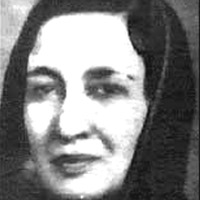Shahzadi (Princess) Jahanara Begum was the eldest daughter of Shah Jahan and Mumtaz Mahal. The name Jahanara that was given to her by her Emperor grandfather Jahangir means ‘Adorner of the world’. Jahanara was the favorite daughter of Shah Jahan. She was a constant companion to her mother Empress Mumtaz Mahal. At the age of only seventeen after the death of Mumtaz Mahal she became the first lady of Mughal Empire. She brought her father out of mourning and restored normalcy to a court darkened by her mother’s death and her father’s grief.
During the rule of Shah Jahan she was the most powerful lady of the Mughal Empire. Her father frequently consulted her for state affairs and bestowed upon her a good deal of fortune and power. She was only fifteen when Shah Jahan conferred on her multiple titles like Sahibat al-Zamani (Mistress of the Age) and Padshah Begum (Lady Emperor). Jahanara was generally called by members of the Mughal court as Begum Sahib as the rules of court etiquette required that her true name should not be profaned in public. Jahanara’s power at court was unquestioned; had her brother Dara Shikoh whose ascension she aspired after their father triumphed, her royal command would have continued. Both of them were disciples of Mian Mir and Mullah Shah Badakshi. There was deep love and understanding between the two while on the other hand her relations with Aurangzab were not cordial. Her younger sister Roshanara Begum with whom her relations were also not pleasant replaced her as head of the harem after Shah Jahan was deposed. Jahanara was instrumental in creating marital alliances. She saw to the betrothal of her brother, Dara Shikoh, to Nadira Bano, and planned out the wedding.
While attending a garden party Jahanara’s clothing caught fire in 1644, she became acutely sick. Shah Jahan himself nursed his beloved daughter back to health that took many weeks. Jahanara took the side of Dara Shikoh in the struggle for the throne, when Shah Jahan was very ill. Dara had promised her to lift the ban on marriage for Mughal princesses, which Akbar had introduced, once he becomes the king. After Aurangzeb occupied the throne, Jahanara joined her father in internment at the Agra Fort. She was devoted in her care of her father, and took sole care of him until his death. Jahanara was known for her active part in social affairs: consoled the poor, gave lot of money for building of mosques and gardens, and was herself a poet of some repute. She also made significant impact on the landscape of the capital city of Shahjahanabad. Of the eighteen buildings in the city of Shahjahanabad commissioned by women, Jahanara commissioned five of them. All of Jahanara’s building projects were completed around the year 1650 inside the city walls of Shahjahanabad. The most well known monument is Chandni Chowk, the central bazaar.
Jahanara breathed her last on 16 September 1681. She lies in the Nizammuddin complex at New Delhi.
This article was last updated on Wednesday, Jan 04, 2006






